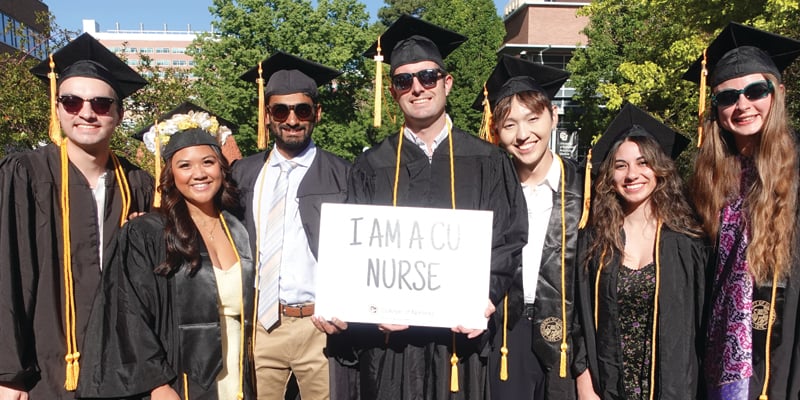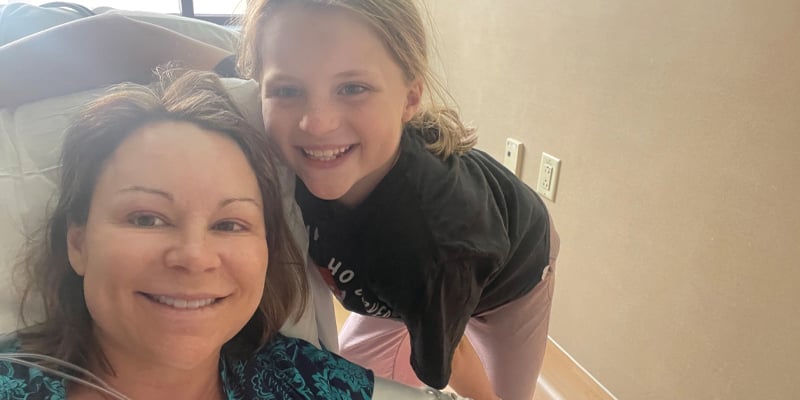When you go to the hospital today, your nurse will most likely be female and white despite a growing multiracial population in the United States. The most recent National Nursing Workforce survey shows nearly 90% of registered nurses (RN) are female and 81% are Caucasian. The largest minority in the RN workforce is Asian at 7.2%. So while U.S. citizens are an amalgamation of racial groups and ethnic cultures, nursing is struggling to diversify. But it needs to happen. Several studies show diversity in nursing improves healthcare across the board.
Some colleges like the University of Colorado College of Nursing, have focused on improving diversity. Not just ethnicity, but also gender. At CU Nursing’s undergraduate program, 34% of students are minorities and 15% are males.
We spoke with Rosario Medina, PhD, FNP-BC, ACNP, CNS, FAANP, associate dean of Clinical and Community Affairs and a professor at CU Nursing.
Dr. Medina, is there diversity in your classrooms?
“We have seen some major changes occurring within the past five years in the undergraduate programs. There are more males and different cultures. At the graduate level, we're not there. We have a lot of work to do still. And of course, that is also reflected in the workforce.”
Do you think more diversity is needed in healthcare?
“I find that patients are much more receptive when they can see one of their own, because there's that underlying messaging, that the values may be the same, or that you can understand the social constructs because you come from the same environment. That's also what the literature says. In my own personal experience, I know that to be true. I've been a nurse for over 40 years mostly practicing in primary care for underserved populations. About 85% to 90% of my patients are Hispanics. The minute they know that I'm Hispanic, it's an immediate relaxation and immediate tuning into what I have to say. So, it makes a difference; it truly does make a difference.”
Does the quality of patient care improve when a minority RN treats someone who looks like them?
“Yes. In the Sheridan Family Health Clinic, the requirement to be hired is to speak Spanish and somehow have been immersed in the culture and the population. So, the staff speaks the language and understands the culture. The patients are quite receptive to them. I had the great fortune of working there for five years. It's already ingrained in me to come in with humility and come in with a different approach, not ‘I know the information and I know the science and I'm going to tell you how to do this.’ But rather, ‘How can I learn about your culture, and how will it affect the decisions we have to make today medically together?’ We should focus on health beliefs and values, and then ask how we can help the community change behaviors that will improve outcomes.”
People have worked for decades to increase diversity in healthcare. It has been slow-going. What are your thoughts on that? And what would you like to see done?
About Our Expert |
|
|
“I think we're having good conversations. But we have a long way to go. The first thing we need to do is not make it a task, or feel an obligation, or feel shamed because it isn't right yet. But we have to have a conversation about value. Why is it important? Let's talk about the value that having a Hispanic at the table brings, so that people can start seeing the value instead of seeing the disparity. Now, that doesn't mean we ignored the disparity, but we need to talk about the value. People don't know why it’s valuable to have diverse thought and a diverse voice. If they don't know, we need to teach them. That's the opportunity that we need.
I would love to be able to see primary care areas or hospitals where providers actually do look like the patients. Some people know that it's not one culture making the decisions. If patients start seeing that others look like them, have them come to the bedside and speak to them and say, “It's okay.”
I spent 23 years in South Florida and went to a hospital in a community where 95% of the people were Hispanics, and not one Hispanic provider was at the bedside. How could that possibly be? Is it that nobody's interested in the medical field? Is it that they don't know that they can be in the medical field? I think that's changing. There are many schools or many universities that have made it a goal to start reflecting on their communities. I hope to see more of that in the future.”

 Rosario Medina, PhD, FNP-BC. ACNP, CNS, FAANP. Dr. Medina is the associate dean of Clinical and Community Affairs and professor at the at the University of Colorado College of Nursing. She is also an associate clinical professor at the Department of Family Medicine, School of Medicine.
Rosario Medina, PhD, FNP-BC. ACNP, CNS, FAANP. Dr. Medina is the associate dean of Clinical and Community Affairs and professor at the at the University of Colorado College of Nursing. She is also an associate clinical professor at the Department of Family Medicine, School of Medicine.

